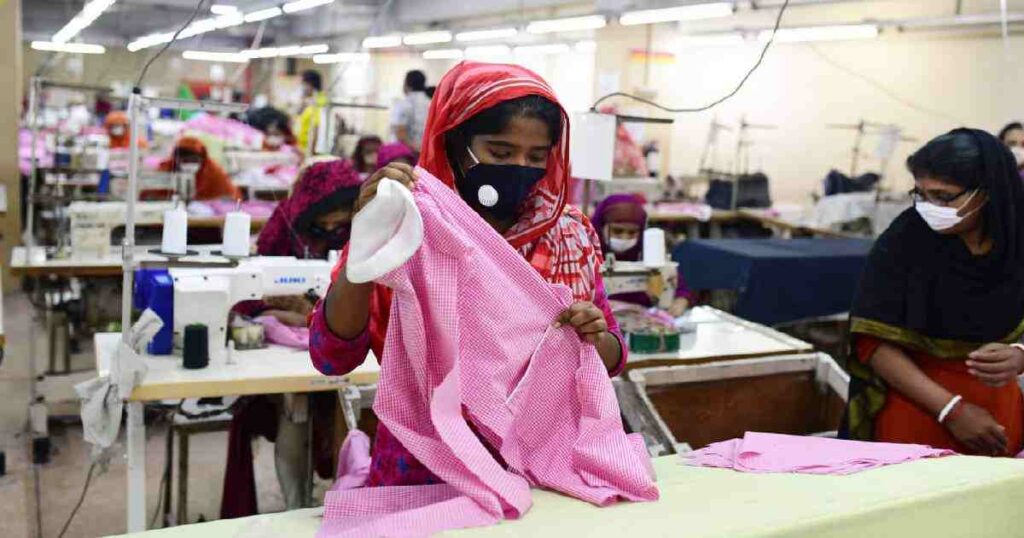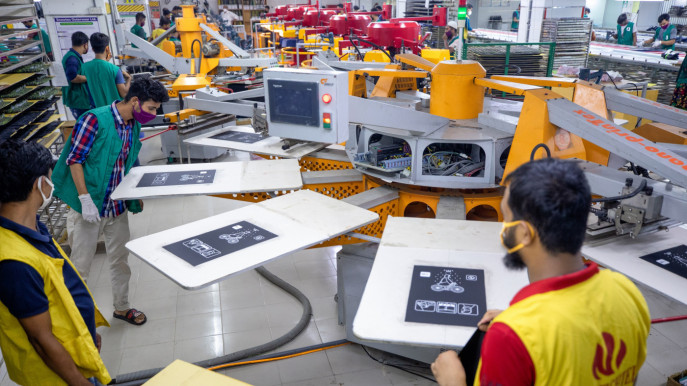
The RMG sector contributes significantly to the economic growth, employment, and exports of these countries, as well as to the global supply and demand of clothing and fashion. However, the RMG sector also faces various challenges and risks, such as the impact of the COVID-19 pandemic, the pressure of environmental and social sustainability, the threat of automation and digitalization, and the uncertainty of trade and geopolitics.
In this article, we will explore some of the key trends, implications, challenges, and technologies that are shaping the RMG sector in Asia, based on the latest research and expert opinions. We will also discuss some of the opportunities and strategies for the RMG sector to adapt and thrive in the changing and competitive environment.
Trends and Implications of the RMG Sector in Asia
The RMG sector in Asia is undergoing a rapid and profound transformation, driven by various factors and forces, such as the consumer behavior, the market dynamics, the industry innovation, and the policy intervention. Some of the key trends and implications of the RMG sector in Asia include:
- Recovery and resilience: The RMG sector in Asia has been severely affected by the COVID-19 pandemic, which disrupted the production, distribution, and consumption of garments, as well as the health and livelihoods of the workers and the communities. According to the World Bank, the RMG exports of Bangladesh, China, India, Vietnam, and Cambodia declined by 16.9%, 6.4%, 28.1%, 6.6%, and 9.4%, respectively, in 2020. However, the RMG sector in Asia has also shown signs of recovery and resilience, as the pandemic situation improved, the vaccination progress accelerated, and the stimulus measures supported. According to the International Trade Centre, the RMG exports of Bangladesh, China, India, Vietnam, and Cambodia increased by 12.6%, 31.4%, 82.3%, 6.9%, and 18.3%, respectively, in the first half of 2021. The RMG sector in Asia is expected to continue its recovery and resilience, as the demand for garments rebounds, the supply chains restore, and the workers and the businesses adapt.
- Sustainability and responsibility: The RMG sector in Asia has been under increasing pressure and scrutiny to improve its environmental and social sustainability and responsibility, as the consumers, the buyers, the regulators, and the civil society demand more transparency, accountability, and action. The RMG sector in Asia is responsible for a significant share of the global environmental and social impacts of the clothing and fashion industry, such as the GHG emissions, the water consumption, the waste generation, the labor rights, the gender equality, and the human development. According to the United Nations, the RMG sector in Asia accounts for about 60% of the global clothing production, 75% of the global clothing carbon footprint, and 80% of the global clothing workforce. The RMG sector in Asia is expected to improve its sustainability and responsibility, as the policies and standards tighten, the technologies and innovations advance, and the partnerships and collaborations strengthen.
- Automation and digitalization: The RMG sector in Asia has been facing the challenge and opportunity of automation and digitalization, which are changing the traditional operational methods and business models of the sector, as well as introducing new consumer trends and market segments. Automation and digitalization can enhance the efficiency, quality, and flexibility of the RMG production, distribution, and consumption, as well as reduce the costs, risks, and emissions of the sector. Automation and digitalization can also create new forms and genres of garments, such as smart, functional, and personalized garments, as well as new platforms and channels of garments, such as e-commerce, social media, and virtual reality. According to the International Labour Organization, the RMG sector in Asia has the potential to automate about 64% of its tasks, and digitalize about 86% of its processes, by 2030. The RMG sector in Asia is expected to embrace and leverage automation and digitalization, as the technologies and solutions mature, the investments and incentives increase, and the skills and capabilities develop.

Challenges and Technologies of the RMG Sector in Asia
The RMG sector in Asia is facing various challenges and risks, such as the uncertainty and volatility of the pandemic, the competition and rivalry of the market, the regulation and compliance of the policies, and the innovation and adoption of the technologies. However, the RMG sector in Asia also has access to various technologies and solutions, such as the automation, digitalization, artificial intelligence, and sustainable materials, that can help overcome and mitigate these challenges and risks, and create new capabilities and opportunities for the sector. Some of the key challenges and technologies of the RMG sector in Asia include:
- Pandemic and recovery: The pandemic and recovery challenge is the challenge of coping with the health and economic impacts of the COVID-19 pandemic, and ensuring the recovery and resilience of the RMG sector in Asia. The pandemic and recovery challenge affects various aspects of the RMG sector, such as the production capacity, the supply chain reliability, the demand fluctuation, the worker safety, and the business viability. The pandemic and recovery challenge can be addressed by various technologies and solutions, such as the health and safety protocols, the vaccination and testing programs, the stimulus and support measures, the online and remote platforms, and the agile and flexible systems.
- Market and competition: The market and competition challenge is the challenge of maintaining and enhancing the market share and competitiveness of the RMG sector in Asia, in the face of the changing and demanding consumer behavior, the shifting and diversifying buyer preferences, and the emerging and evolving competitor strategies. The market and competition challenge affects various aspects of the RMG sector, such as the product quality, the price affordability, the design innovation, the brand reputation, and the customer loyalty. The market and competition challenge can be addressed by various technologies and solutions, such as the data and analytics, the customer relationship management, the product lifecycle management, the e-commerce and social media, and the smart and functional garments.
- Policy and compliance: The policy and compliance challenge is the challenge of complying and aligning with the policy and regulatory requirements and expectations of the RMG sector in Asia, in terms of the environmental and social sustainability and responsibility, the trade and geopolitics, and the innovation and development. The policy and compliance challenge affects various aspects of the RMG sector, such as the emission reduction, the waste management, the labor rights, the trade agreements, and the intellectual property rights. The policy and compliance challenge can be addressed by various technologies and solutions, such as the sustainable materials, the circular economy, the traceability and transparency, the trade facilitation, and the research and development.
- Technology and innovation: The technology and innovation challenge is the challenge of developing and adopting the technology and innovation solutions and opportunities of the RMG sector in Asia, in terms of the automation and digitalization, the artificial intelligence and machine learning, and the sustainable materials and processes. The technology and innovation challenge affects various aspects of the RMG sector, such as the production efficiency, the distribution flexibility, the consumption personalization, the data security, and the skill development. The technology and innovation challenge can be addressed by various technologies and solutions, such as the robotics and intelligent manufacturing, the internet of things and cloud computing, the 3D printing and knitting, the blockchain and encryption, and the education and training.

Conclusion and Recommendations
The RMG sector in Asia is a vital and dynamic sector, that contributes to the economic and social development of the region, as well as to the global clothing and fashion industry. However, the RMG sector in Asia also faces various challenges and risks, that require a strategic and adaptive approach, that considers the trends and implications, the challenges and technologies, and the opportunities and strategies of the sector.
Therefore, we recommend the following actions for the RMG sector in Asia, to ensure its sustainability and competitiveness in the changing and competitive environment:
- Strengthen the collaboration and coordination among the stakeholders of the RMG sector in Asia, such as the governments, the industry, the academia, and the civil society, to create a common vision and agenda, and to leverage the synergies and complementarities of the sector.
- Invest in the research and development of the technologies and innovations of the RMG sector in Asia, such as the automation, digitalization, artificial intelligence, and sustainable materials, to enhance the capabilities and opportunities of the sector, and to address the challenges and risks of the sector.
- Enhance the skills and capabilities of the workers and the businesses of the RMG sector in Asia, to enable them to adapt and thrive in the automation and digitalization environment, and to provide them with the education and training, the support and incentives, and the protection and empowerment of the sector.
- Promote the sustainability and responsibility of the RMG sector in Asia, to improve the environmental and social performance and impact of the sector, and to meet the policy and regulatory requirements and expectations of the sector, as well as the consumer and buyer preferences and demands of the sector.





